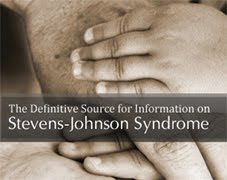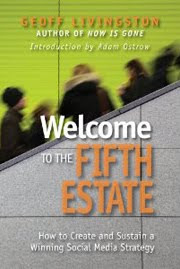 Johnson & Johnson is embroiled in what may be the crisis communication dilemma of the year. You would never know it from their Website. Instead, you'll see a huge section that details how much they care about people.
Johnson & Johnson is embroiled in what may be the crisis communication dilemma of the year. You would never know it from their Website. Instead, you'll see a huge section that details how much they care about people. At the same time, Johnson & Johnson has made a dramatic shift in its communication strategy since the days it delivered a best practice in crisis management for Tylenol in 1982. Instead of being at the forefront of product safety, it is patently less aggressive about product safety related to its other assets.
Specifically, although Johnson & Johnson lends its legal team to assist the court cases being lobbied at Motrin, its once stellar reputation for communication doesn't seem to cover McNeil Consumer Healthcare, which markets the Motrin brand. The Motrin brand is in a communication firestorm. Its Fort Washington plant was suspended in connection with the recall of infants’ and children’s liquid over-the-counter (OTC) products manufactured there. There are other problems with the Motrin brand.
Can a company wear a black and white hat in medicine?
Even more current, Johnson & Johnson is reveling in praise for new labeling on acetaminophen products while simultaneously poised to fight a settlement and labeling related to another tragic story mentioned last week.
 The company's argument seems to be that the Stevens-Johnson Syndrome and Toxic Epidermal Necrolysis (SJS/Tens) experienced by several children in the last few years after taking Motrin doesn't warrant warnings let alone responsibility. They contend it is too isolated. Ironically, it also flies in the face of their 1982 best practice in crisis management.
The company's argument seems to be that the Stevens-Johnson Syndrome and Toxic Epidermal Necrolysis (SJS/Tens) experienced by several children in the last few years after taking Motrin doesn't warrant warnings let alone responsibility. They contend it is too isolated. Ironically, it also flies in the face of their 1982 best practice in crisis management. Back then, Johnson & Johnson revised medication safety because of an isolated incident that affected nine people in Chicago. The company didn't even have any responsibility for that atrocity and it stepped up. But now, when it seems to be responsible, it is willing to invest considerable funds to fight.
Likewise, in the unrelated phantom recall of Motrin products two years ago, McNeil Consumer Healthcare apparently tried to cover up the recall by repurchasing product but not calling for a recall. The result could have led to dangerous products being left out in the marketplace. Johnson & Johnson is fighting that lawsuit too.
Crisis management in the world of multi-brands.
Johnson & Johnson is hardly alone in creating massive companies with multiple brands that most consumers miss on the surface. The question crisis management teams need to start asking themselves is, despite the various degrees of separation, can a corporate parent really afford to play two sides against the middle anymore?
Isn't this the same argument that BP attempted to make during the Gulf Coast oil spill with the incessant blame game? That the lead company was somehow exempt from responsibility if the contractors under its watch were about to make a historic environmental catastrophe.
Like it or not, consumers are connecting the dots with more and more frequency. Companies are held accountable for employee actions. Companies are held accountable for contractor actions. So doesn't it stand to reason that subsidiaries are also accountable?
Ergo, don't consumers deserve to hear better words from attorneys representing a Johnson & Johnson company that “McNeil complied with every federal regulation and that’s what the proof is.”
Mitigation is the single most important aspect of crisis communication.
Under normal circumstances, maybe not. But given Johnson & Johnson has invested billions of shareholder dollars to appear like it is the absolute leader in pharmaceutical customer safety, Johnson & Johnson is risking one of its greatest assets, a brand name that managed to escape increased scrutiny after the Campaign for Safe Cosmetics two years ago.
 In considering the four basic tenets of disaster planning, Johnson & Johnson is continuing to fall short in the area where it was always the strongest. Mitigation focuses on long-term measures to reduce or eliminate risk. It considers more than whether a company "can" win a case. It considers what is lost when a company does win a case.
In considering the four basic tenets of disaster planning, Johnson & Johnson is continuing to fall short in the area where it was always the strongest. Mitigation focuses on long-term measures to reduce or eliminate risk. It considers more than whether a company "can" win a case. It considers what is lost when a company does win a case. In this situation, when you add up the court cases, future court cases, immediate public relations damage, and long-term brand damage versus a few settlements, relabeling costs (for a product not even on the market right now), and a physician education campaign, it seems to me Johnson & Johnson is reacting instead of taking the kind of proactive safety measures it used to be known for at great cost. Much more than $10 million. Much more than $1 billion. Much more than $10 billion.
The inherent weakness in the decisions being made at Johnson & Johnson regarding Motrin may even reinforce why a toothless public relations division is not necessarily the best division to handle crisis management. They all too often focus on minimizing publicity damage instead of considering the big picture of brand position. Likewise, lawyers aren't always the best crisis management leaders either. Some of them are too busy framing up crisis management cases in terms of whether it is winnable or not.
To make it work, companies need balanced crisis management teams that can objectivity assess the problems before them. And, if public relations is placed in charge of more than a crisis communication team, then they need to be (at least) empowered and given equal consideration as the legal team. Of course, this also assumes the PR team has enough crisis training. Most of them do not.
At Johnson & Johnson, the growing crisis ought be to handled much like an employee incident. Johnson & Johnson needs to scrub McNeil Consumer Healthcare of executives who allow the worst to happen. And, if they cannot manage themselves as a division, the company might consider folding the Motrin brand into its Johnson & Johnson brand. Of course, all this assumes Johnson & Johnson wants to maintain its reputation as a leader in consumer safety, an asset it once spent billions to create.
One wonders what Robert Wood Johnson might think. He was the former chairman (1932-1963) who crafted the company's credo before anybody ever heard the terms corporate social responsibility and a moral compass. What happened?

























